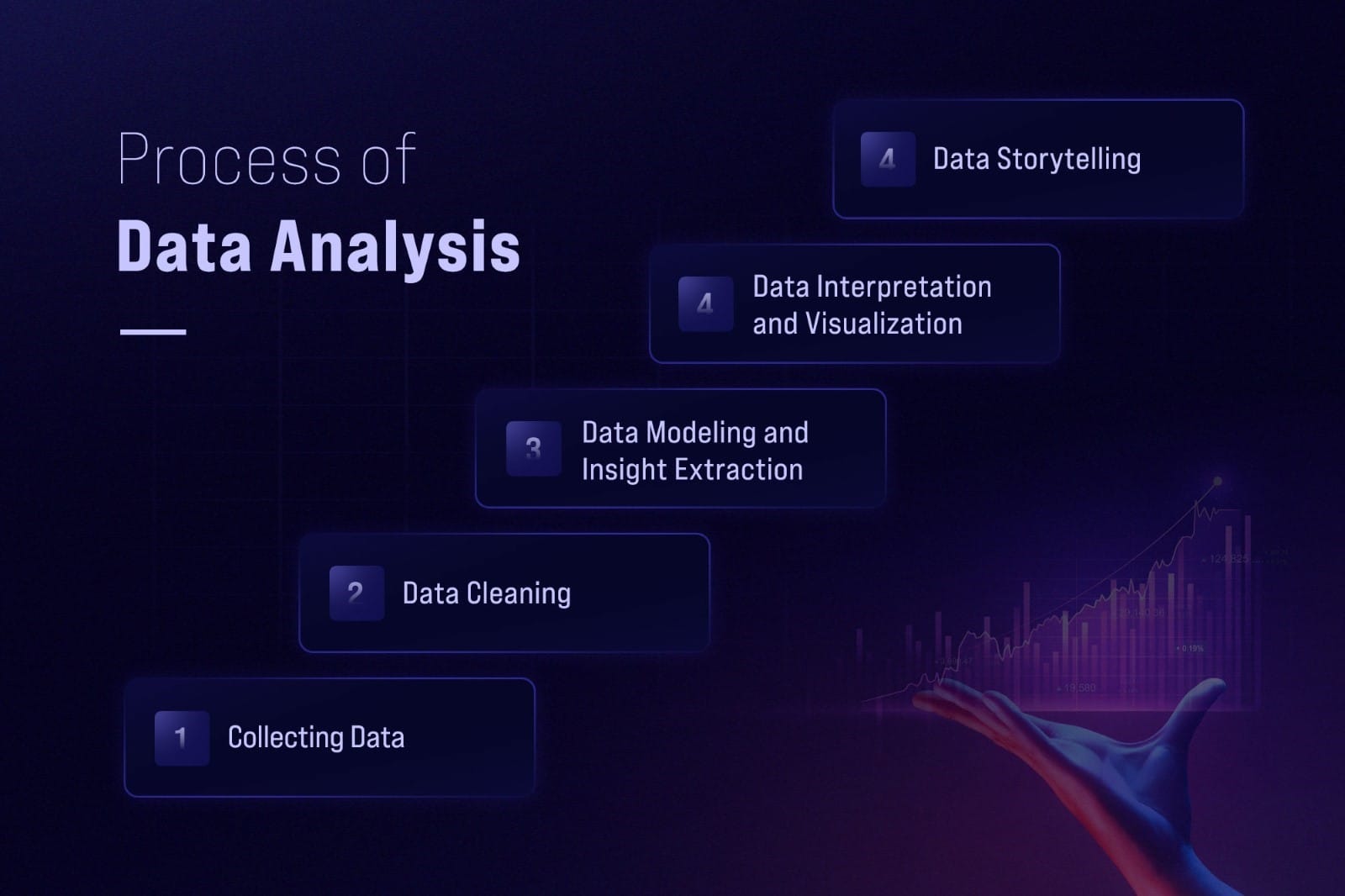Career Prospects as an Analyst

Data has revolutionized how businesses, governments, and individuals operate in the 21st century. It is indispensable to every minute decision taken, from guiding the development of life-saving medicines to optimizing supply chains, predicting market trends, and personalizing customer experiences.
It is data that enables organizations to set strategic directions, guide operations, and measure effectiveness and performance across industries. While data collection is foundational, the alchemy of turning data into decision-driven intelligence is the domain of an analyst. They are the ones who turn data into a strategic asset for the organization, helping them compete in the market.
Consequently, analysts serve as pivotal contributors to decision-making frameworks across diverse industry sectors. The purpose of this article is to help readers understand the intricacies of a career as an analyst, how to pursue one, their primary responsibilities, and much more.
Who is an Analyst?
An analyst identifies trends, makes forecasts, and extracts valuable insights by gathering, studying, and interpreting relevant data. Analysts can specialize in a wide range of fields, including economics, data analysis, finance, operations, product, marketing, growth, and business analysis.
Their responsibilities may vary based on the demand for specific career paths within the analyst umbrella. Ultimately, an analyst, regardless of specialization, strives to improve organizational efficiency and enable data-driven decisions.
Understanding the goal and what must be accomplished is the foundation of every great analyst. This process includes understanding a problem or situation, formulating specific questions for the analysis, and selecting the metrics or indicators that will serve as a measure of success and potential results.
Process of Data Analysis
Data analysis is a step-by-step process that includes a number of requirements to ensure that data is used effectively to produce outcomes. Steps include:

Collecting Data
Data collection encompasses the systematic gathering of information by leveraging a variety of methods. It includes manual techniques like surveys and interviews as well as automated processes where data is logged automatically, such as through digital systems or specialized platforms like Bloomberg Terminals or lead management systems like Adobe Marketo Engage and LeadSqaured.
These methods aim to capture both quantitative (numerical) and qualitative (non-numerical) data necessary for analysis and decision-making in business contexts.
Data Cleaning
Data cleaning, or data cleansing, represents an essential procedure for guaranteeing the precision and dependability of information gathered during the initial phase. It involves fixing errors, inconsistencies, and missing information within the dataset to improve its quality and reliability for analysis or other purposes. It is a necessary requirement before moving on to structuring the data and defining connections between them.
Data Modeling & Insight Extraction
As part of this step, analysts apply statistical and mathematical input to the cleaned data to extract relevant insights that define the reasons behind the business problems and build appropriate solutions to them. This includes presenting insights to stakeholders, answering their questions, and recommending an appropriate course of action. It is here that the core analysis is performed, using tools like Excel, Power BI, Python/R, and many others.
Data Interpretation and Visualization
Data analysis only helps unlock the story, which also needs to be interpreted and translated into a clear and understandable format. This is where data visualization plays a crucial role, as it helps to make complex data more accessible through visual representations like charts, graphs, and dashboards.
Data Storytelling
This step involves the practice of communicating data insights through a compelling narrative that combines data, visuals, and context. The ultimate objective is to present intricate data clearly, which is engaging and actionable for a wide audience, including those without technical expertise. This encompasses not merely data presentation but also its interpretation in a manner that communicates the relevance of insights and promotes data-based decision making.
Must-Have Skills for an Analyst
There are various types of skills that are non-negotiable for a professional analyst. Such skills can be divided into three main categories: analytical skills, technical skills, and functional skills. Let us understand each of the distinct categories in detail.
Analytical Skills
First Principle Thinking
First-Principles Reasoning involves deconstructing intricate challenges into their most elementary, foundational components known to be accurate, then constructing solutions upward from these essential truths. This method allows for innovative thinking by avoiding assumptions and conventional wisdom, focusing instead on foundational concepts that are universally accepted as true
First principle thinking helps in data analysis by:
- Setting the contextual understanding of the problem.
- Deconstruct the problem into a structured and detailed framework.
- Test hypotheses for each element of the structure.
- Analyze the fundamental reasons affecting each element.
Critical Thinking
The act of critical thinking involves actively questioning, examining, and evaluating information and assumptions so that well-informed decisions can be made. It involves questioning assumptions, analyzing evidence, considering multiple viewpoints, and relying on logic and reasoning to test perspectives for validity. Essentially, it is the ability to think clearly and rationally to make holistic decisions based on data and practical experience.
Logical Reasoning
Logical reasoning describes the methodology of formulating valid conclusions based on observable patterns, interconnections, and associations between disparate elements. It refers to the ability to structure an argument and make logical judgments based on evidence and analysis. To arrive at logical solutions, it analyzes information, identifies patterns, and draws deductions based on a set of premises or statements.
Technical Skills
Technical skills involve knowledge and expertise in utilizing various analytics tools for interpreting, visualizing, and communicating relevant information from given data. It involves:
Tools for Data Extraction
- SQL: For managing and manipulating relational databases, querying large datasets, and retrieving specific data.
- PostgreSQL: It helps with data extraction by providing powerful querying capabilities, data integrity, and extensive indexing options, making it easier to extract and manipulate large datasets.
- Python: Aids in data extraction by providing powerful libraries like BeautifulSoup, Scrapy, and Pandas for web scraping, data manipulation, and integration with various data sources.
Tools for Data Analysis
- Excel: For basic data analysis, financial modeling, and reporting.
- SQL: For managing and manipulating relational databases, querying large data, defining and modifying database schemas, and retrieving specific data.
- Python/R: For advanced statistical analysis, machine learning, and automation of data processing.
Tools for Visualization
Visualization tools help analysts present complex insight data in an easy-to-understand and visually appealing way. Key tools include:
- Tableau: For creating interactive dashboards, drag & drop simplicity, and comprehensive storytelling.
- Power BI: For business analytics and real time data updates while being user-friendly for both developers and stakeholders.
- Matplotlib/Seaborn (Python): For creating visuals presenting statistical insights from large data.
Note that there are a lot more tools available, with each specializing in different areas of data analysis.
Functional Skills
Under the analyst's umbrella, functional skills can change from one role to another. Financial analysts, for instance, have different demands and responsibilities than operations analysts or marketing analysts. Therefore, functional skills are contextualized according to the analyst's role. To understand this, let us compare the functional skills of three different analyst roles.
Financial Analyst
Functional skills for a financial analyst involve:
- Understanding balance sheets and key components like assets, liabilities, and equity.
- Analyzing profit and loss (P&L) statements reveals a company’s income and expenditures over a specific timeframe.
- Understanding cash flow statements and making financial projections are important for evaluating a company’s liquidity, operating activities, investing activities, and future financial health.
Growth Analyst
Growth analysts typically possess the following functional skills:
- Understanding of user journeys, funnels, and engagement metrics to optimize and increase customer lifetime value (CLTV).
- Expertise in crafting and evaluating A/B experimental trials to enhance conversion metrics and user interface experiences.
- Analyzing user behavior based on specific groups (cohorts) to identify trends and patterns.
Marketing Analyst
Specialized skills unique to marketing analyst professionals involve:
- Executing comprehensive marketplace research to comprehend customer requirements, inclinations, and competitive environments.
- Applying statistical methods to analyze marketing campaign performance, customer segmentation, and the impact of different marketing channels on sales and revenue.
- Developing models to forecast market trends, customer behavior, and campaign outcomes.
This highlights how different analytic roles call for acquiring different functional skills.
Roles to Target as an Analyst
The role of an analyst is indispensable for businesses across sectors in today’s day and age. These professionals act as the link between raw data and strategies that drive decision-making. There are various common analyst specializations to focus on, like growth analyst, business analyst, operations analyst, media analyst, research analyst, and much more. Let us understand these roles in detail.

Growth Analyst
A growth analyst helps an organization by analyzing market trends, customer behavior, and business performance to identify growth opportunities and inform strategic decision-making. In addition to acquiring, retaining, and increasing revenue, they are also responsible for formulating.
To identify growth opportunities, they analyze customer behavior and market trends using data analysis tools, surveys, CRM software, statistics, and market research tools. The tools they use convert data into insights for marketing campaigns (email marketing platforms, social media analytics) and product development (A/B testing tools).
Lastly, they help businesses grow by predicting future growth, utilizing third-party data to maintain a consistent data warehouse, and managing budgets.
Business Analyst
Business analysts use a common set of skills, like data analysis and communication, but how they use them can vary depending on the industry, company, and project.
Business analysts fulfill a crucial function in fostering business success. They operate as investigative professionals, perpetually searching for methodologies to enhance organizational operations.
Their tasks include:
- Analyzing sales data to identify areas with low conversion rates or studying customer feedback to understand pain points.
- Engaging directly with clientele to understand their requirements and desires. This customer insight in turn helps design and modify business or IT systems that directly serve those needs.
- Analyzing business needs and requirements to design and suggest solutions, like revamping internal workflows or developing entirely new software applications. They also maintain clear communication with developers, who will bring those solutions to life.
- Initiating testing new systems and creating user guides that help employees and customers navigate the changes. They may even lead workshops to bring together stakeholders from different departments, ensuring everyone is on the same page and understands the goals of the implemented changes.
Operations Analyst
It is operations analysts who solve business problems. As part of their duties, they address the internal challenges faced by companies, such as inefficiency in staffing and costs, inventory control, software development, quality assurance, customer service, and financial planning.
Operational analysts typically collect information from stakeholders across the organization to identify potential concerns.
Their tasks include:
- Researching and evaluating the issue using statistical analysis software and internal data sources,
- Utilizing simulation modeling, linear programming, queueing theory, and other data modeling techniques to address operational problems & transforming data insights into actionable decisions.
- Conducting data forecasting, which serves as the cornerstone of their analytical strategy, enabling the creation of precise reports and presentations.
- Working cross-functionally, as the complexity of the problems they tackled often required collaborating with other analysts, researchers, and project managers. This collaborative approach ensured that solutions were thoroughly researched, efficiently executed, and proven to be successful.
Media Analyst
Media analysts are professionals who play a vital role in the success of an advertising campaign. Unlike social media analysts, who focus specifically on social media platforms, media analysts cover a broader range of media sources, both traditional ones like TV, radio, and print publications and newer digital channels like websites and online publications.
Their tasks include:
- Leveraging online advertising data to analyze user demographics and engagement patterns across multiple social media platforms and websites.
- Identifying the optimal channels with the highest potential for reaching target audiences.
- Employing robust research techniques like interviews, focus groups, and surveys to gain a comprehensive understanding of the target audience's preferences, motivations, and media consumption habits.
- Integrating audience insights into campaign messaging and creative content for maximum resonance.
- Tracking and analyzing campaign performance across various metrics, including website traffic, social media engagement, brand sentiment, and conversion rates.
- Creating comprehensive reports, leveraging data visualization techniques, and empowering stakeholders to make informed decisions regarding campaign optimization, budget allocation, and future marketing strategies.
Research Analyst
A research analyst is a financial professional who analyzes data and prepares reports on securities or assets. They can work for investment banks, asset management companies, or hedge funds. There are two main types of research analysts: buy-side and sell-side.
Buy-side analysts work for institutional investors like mutual funds and pension funds. They research potential investments and make recommendations to the money managers who decide what to buy and sell. In contrast, sell-side analysts work for investment banks and securities firms. They research companies and issue recommendations to investors, such as "buy," "sell," or "hold." They may also try to sell their research reports to clients.
Their tasks include:
- Gather information from diverse sources, like financial reports, industry databases, surveys, and even social media.
- Utilizing advanced software and statistical models to examine collected data, uncovering trends, patterns, and hidden insights. These insights are then converted into straightforward reports, presentations, or dashboards to effectively communicate complex information.
- Research analysts leverage their analysis to predict future trends and make informed recommendations. These recommendations guide strategic plans, investment decisions, marketing strategies, and even policy formulation.
- Research analysts continuously learn about industry trends, economic conditions, and technological advancements to stay constantly updated.
On a grand scale, a business requires several types of analysts to advance its goals. For example, financial analysts focus on financial data, market research analysts study consumer behavior, operations research analysts optimize business processes, and data analysts wield expertise in data manipulation and visualization.
How to Break into Analyst Roles
Entering the field of data analysis can feel overwhelming. People believe that simply learning tools or taking popular new-age analytics courses is sufficient preparation for them to become analysts.
However, this specialist profession demands a combination of extensive experience, knowledge of tools and processes, cross-functional abilities, and an appropriate educational background to master. Here is how you can pursue a career as a data analyst:
Try out Data Analysis Responsibilities at Your Current Job
Being employed somewhere provides the best opportunity to try out analyst roles within the company. Start by incorporating data analysis into your responsibilities, even if it is not part of your job description.
Show your abilities to solve data problems to reassure your supervisors or designated seniors that you can handle analyst responsibilities. Even if you do not pivot into an official analyst post, you will have the experience and confidence to find out if you are a good fit for this career.
Learn the Necessary Skills
Data analysts must have a blend of technical, functional, analytical, and interpersonal skills to be successful. Below are some of the interpersonal skills an analyst needs:
- Delivering effective presentations to analyze data and identify patterns.
- Promoting cross-functional team collaboration.
- Managing stakeholders by operating at the intersection of technical expertise and business understanding.
- Presenting hypotheses and insights clearly through effective communication.
- Ensuring attention to detail to maintain accuracy and dependability in data analysis.
Build a Portfolio with Projects and Volunteering
A good portfolio of relevant experience and projects to show is a sign of your excellence in the field. A strong portfolio demonstrates your ability to extract meaningful insights from data, your proficiency with data analysis tools, and your credibility in handling the complexities of an analyst career. Apply your skills to real-world problems by:
- Analyzing public datasets or participating in competitions like Kaggle or the WiDS annual datathon.
- Contributing voluntarily with organizations like DataKind, Delta Analytics, or extending analytical services to non-profit entities or small-scale enterprises.
- Incorporating data analysis tasks into your current job, if possible. A compelling portfolio was illustrating their capability to extract significant insights from datasets and demonstrating proficiency with analytical tools.
Key Components of a Portfolio
Host projects on GitHub and share links to personal blogs or websites, displaying your work. The portfolio should clearly state the objective, methodology, tools used, and outcomes of the projects you have done.
Additionally, share scripts and code snippets, charts, graphs, and dashboards for visualization, emphasizing key insights and their implications for the projects. Having 3 to 5 projects or more in the portfolio is enough to demonstrate skills and problem-solving capabilities.
When a candidate combines the right skills, knowledge of relevant concepts, and mentorship experience from experts in the field, they are well positioned to succeed. By doing this, their portfolio becomes distinctive, increasing their chances of securing an analyst position.
Gain Proper Education and Keep Learning
Getting a formal education can significantly increase your credibility in this field and is the best way to break into the analyst profession. It is common for students to pursue a degree in a field like data science, computer science, engineering, statistics, business administration, or other related courses.
Even though such courses do not address analyst role requirements, they surely equip students with the necessary skills to handle real-world data challenges, such as statistical analysis, data modeling, programming languages, and problem-solving.
Alternatively, certifications like Certified Data Analyst (CDA), Microsoft Certified Data Analyst Associate, and Google Data Analytics Professional Certificate also help equip students with the necessary competencies and make their portfolios look attractive.
There are also specific online data analytics courses provided by Coursera, Simplilearn, edX, and Udemy that can help enhance their resume prospects.
Prepare for Interviews
While interviews are always tough to crack, with some preparation, you can turn them into an opportunity to highlight your skills and land the job you want. Begin by pursuing entry-level opportunities such as Junior Data Analyst, Data Technician, or Analytics Assistant.
Customize your resume to emphasize analytical capabilities, completed projects, educational background, and professional certifications. Even roles involving data entry or reporting can provide practical experience. Ace your interview by:
- Explaining your interest in data analysis and how your background prepared you for the role. Mention impactful stories and past projects that highlight your skills.
- Preparing a list of common interview questions surrounding your role, company culture, and team.
- Sharpening your technical skills by practicing SQL on platforms like Dataford or interview queries.
- Researching the company by visiting their website, about us, mission, vision, Wikipedia, and latest news to know the company inside-out!
Breaking into a role as an analyst requires continuous effort. Regularly update your skills, resume, LinkedIn profile, and portfolio. In addition to networking and continuous learning, updating your portfolio with new projects is essential to staying current with industry trends.
Summing Up
In conclusion, a career as an analyst is both challenging and rewarding, offering the opportunity to transform raw data into actionable insights that drive organizational success. Analysts rely on a blend of analytical, technical, and functional skills to solve complex problems across industries like finance, marketing, and operations.
To break into this field, aspiring analysts should focus on building technical expertise, gaining hands-on experience through projects, and pursuing relevant education or certifications. A strong portfolio, continuous learning, and thorough interview preparation are essential to stand out.





